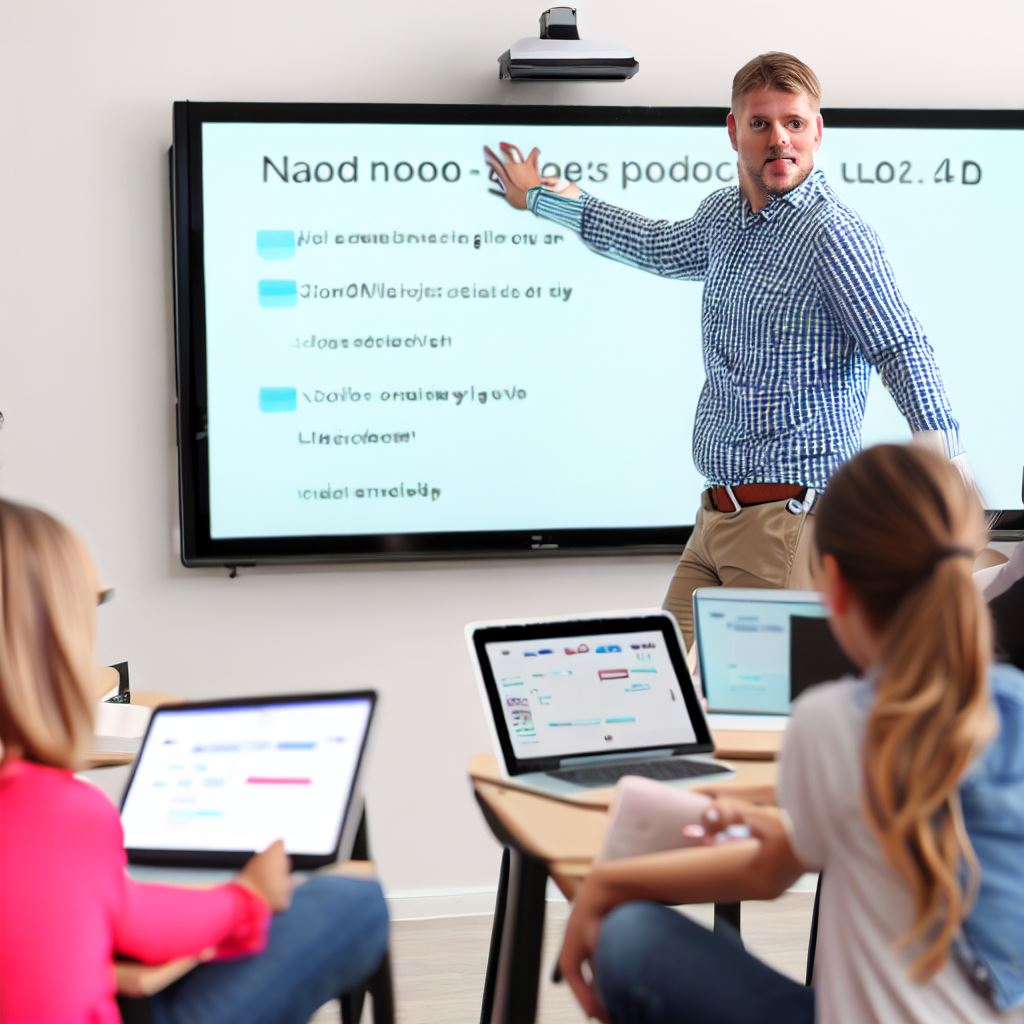Introduction
Teaching coding to kids has become increasingly important in today’s digital age.
As kids progress in their coding skills, they eventually need to transition from block-based coding to text-based coding.
Thesis statement: This blog post will discuss the steps involved in transitioning kids from block-based coding to real code.
Importance of Teaching Coding to Kids:
- Fosters problem-solving skills.
- Enhances logical thinking.
- Prepares for future tech-driven careers.
- Encourages creativity and innovation.
- Empowers children to shape the digital world.
Transitioning from Block-Based to Text-Based Coding
- Block-based coding as a foundation.
- Building familiarity with coding concepts.
- Introducing syntax and real programming languages.
- Promoting hands-on coding experiences.
- Nurturing a growth mindset in young learners.
Thesis Statement: Transitioning Kids from Blocks to Real Code:
In this blog post, we will delve into the essential steps required to smoothly guide kids from block-based coding to the world of real coding.
We will explore strategies, tools, and tips that educators and parents can utilize to ensure a successful transition, setting young minds on the path to becoming proficient coders.
Understanding the Basics
Block-based coding is a visual programming method where users drag and drop blocks to create code. Its advantages include accessibility, ease of use, and visual representation of concepts.
Block-based coding has limitations such as restricted flexibility, limited syntax exploration, and difficulty in understanding complex programming concepts.
Transition to text-based coding is necessary for deeper learning and real-world coding scenarios.
Learning text-based coding enhances logical thinking, problem-solving skills, and creativity.
It provides a deeper understanding of code structure, syntax, debugging, and fosters independence in coding projects.
A gradual transition process helps kids develop a solid foundation in block-based coding before transitioning to text-based coding. It reduces frustration, builds confidence, and ensures a smoother learning experience.
Transitioning from Blocks to Text: Empowering Young Coders
In today’s technology-driven world, coding has become an essential skill for children to acquire. It opens up a plethora of opportunities and empowers them to become creators rather than just consumers of technology.
When introducing coding to kids, block-based coding platforms have gained popularity due to their user-friendly interface and visual representation of coding concepts.
However, while block-based coding offers numerous advantages, it eventually becomes necessary to transition kids to real code – text-based coding.
Tech Consulting Tailored to Your Coding Journey
Get expert guidance in coding with a personalized consultation. Receive unique, actionable insights delivered in 1-3 business days.
Get StartedBlock-based coding involves assembling pre-programmed blocks, representing different functions or commands, to create code.
It simplifies the coding experience and makes it accessible to children as young as preschoolers.
Through colorful blocks and puzzle-like structures, kids can understand the logic behind coding concepts, making it an ideal starting point for young learners.
The advantages of block-based coding are evident. First, it promotes accessibility as it eliminates the need for advanced typing skills and memorizing syntax.
This lowers the barrier to entry and allows kids to focus on the logic of programming.
Second, it offers an intuitive interface, making it easier for kids to experiment with different concepts and engage in hands-on coding activities.
The visual representation of code helps them see the cause-effect relationships in programming, enhancing their understanding.
Learning text-based coding offers a multitude of benefits for kids. First and foremost, it enhances logical thinking and problem-solving skills.
By providing a structured and gradual shift, kids can build upon their existing coding knowledge while slowly adapting to the syntax and structure of text-based code.
By implementing a gradual transition process, educators and parents can empower kids to become proficient in real code, equipping them with skills that extend beyond the digital realm.
Read: Python vs. Other Languages: Strengths & Weaknesses
Step 1: Familiarizing Kids with Syntax
- Syntax refers to the rules and guidelines that govern the structure and organization of code.
- It determines how programming languages are formatted and interpreted.
- Understanding syntax is crucial for writing code that computers can understand and execute.
Examples of common syntax elements in text-based coding languages
- In languages like Python, statements are often separated by line breaks or indentation.
- Variables are assigned using the equals sign (=).
- Conditional statements use keywords like if, else, and elif.
Importance of understanding syntax for writing and reading code
- Proper syntax ensures that code is free of errors and can be easily understood by other programmers.
- It helps in identifying and fixing bugs or issues in the code.
- Understanding syntax also enables kids to analyze and debug programs effectively.
Suggest resources or coding platforms that offer syntax practice for kids
- Websites like Code.org, Scratch, and Tynker offer interactive coding tutorials with syntax exercises.
- Coding books specifically designed for kids, such as “Coding for Kids” by Adrienne Tacke, can be helpful.
- Local coding clubs or after-school programs may also provide structured syntax practice for kids.
By familiarizing kids with coding syntax, we lay a strong foundation for their transition to real code.
Understanding how code is structured and formatted is essential for becoming proficient in programming.
Through explanation and examples, kids can grasp the importance of syntax and its role in coding languages.
Build Your Vision, Perfectly Tailored
Get a custom-built website or application that matches your vision and needs. Stand out from the crowd with a solution designed just for you—professional, scalable, and seamless.
Get StartedEngaging them in practice exercises, whether on websites or through books, helps reinforce this understanding.
Overall, Step 1 sets the stage for kids to confidently move from block-based coding to text-based programming.
Stay tuned for Step 2, where we delve into the process of writing and executing real code!
Read: Python OOP: Dive into Classes and Objects

Step 2: Introducing Variables and Data Types
Define variables and data types in the context of coding
In coding, variables represent containers for storing data that can be used and updated throughout the program.
Data types define the kind of data that variables can hold, such as numbers, text, or Boolean values.
Discuss the role of variables and data types in text-based coding
Variables and data types are essential in text-based coding as they enable programmers to manipulate and process information.
Variables allow for dynamic storage and retrieval of data, while data types define the operations that can be performed on that data.
Provide examples of commonly used variables and data types
Commonly used variables include integers (int), floating-point numbers (float), and strings (text).
These data types allow for working with whole numbers, decimal numbers, and textual information, respectively.
Recommend coding exercises or projects that involve variables and data types
- Basic Math Calculator: Create a program that prompts the user for two numbers, performs basic math operations (addition, subtraction, multiplication, division) using variables, and displays the results.
- Temperature Converter: Build a program that converts temperatures between Celsius and Fahrenheit using variables to store the input values and data types to ensure accurate computations.
- Text Analyzer: Develop a program that takes a user-inputted sentence, counts the number of characters, words, and vowels using appropriate variables and data types, and presents the results.
- Simple Game: Design a simple text-based game where variables are used to keep track of player points, health, or inventory. Data types can ensure proper handling of these game attributes.
- Shopping Cart: Construct a program that simulates an online shopping experience. Use variables to keep track of items, quantities, and prices, and data types to accurately calculate costs and apply discounts.
By introducing variables and data types, young coders can understand the importance of storing and manipulating information within a program.
These concepts pave the way for more complex coding practices and promote logical thinking and problem-solving skills.
Read: Python Functions: Writing Clean & Efficient Code
Step 3: Teaching Control Flow and Loops
- The concept of control flow and loops in coding is essential for programming.
- To introduce conditional statements (if-else) and loops (for, while) is crucial in this step.
- Control flow and loops play a vital role in real code as they determine program flow and repetition.
Step 4: Encouraging Problem-Solving and Debugging
Highlight the critical thinking skills required for problem-solving in coding
Teaching kids coding not only helps them learn a new language but also fosters critical thinking skills.
Through coding, children develop problem-solving abilities by breaking down complex tasks into smaller, manageable steps.
They learn to identify patterns, think logically, and devise strategies to solve coding problems efficiently.
Optimize Your Profile, Get Noticed
Make your resume and LinkedIn stand out to employers with a profile that highlights your technical skills and project experience. Elevate your career with a polished and professional presence.
Get NoticedDiscuss the importance of debugging and fixing errors in real code
In the world of coding, errors are inevitable. Teaching kids how to debug and fix errors is crucial.
Emphasize the importance of attention to detail and patience when it comes to troubleshooting.
Explain how debugging helps identify and rectify issues, leading to functional and error-free code.
Share tips for teaching kids effective problem-solving and debugging strategies
- Encourage experimentation: Teach kids to try different approaches when faced with coding problems.
- Emphasize that even mistakes can lead to valuable learning experiences.
- Break down the problem: Teach children how to break down complex problems into smaller, manageable parts.
- By analyzing each component individually, they can create effective solutions.
- 3. Foster collaboration: Encourage kids to work together and discuss coding problems.
- Collaborative problem-solving enhances creativity and exposes them to different perspectives.
- 4. Teach systematic debugging: Teach kids to approach debugging systematically.
- Encourage them to identify and isolate the problem, check for common errors, and test potential solutions.
Recommend coding challenges or projects to enhance problem-solving abilities
- Maze-solving: Create a maze-solving challenge where kids use code to navigate a virtual maze.
- This activity enhances algorithmic thinking and problem-solving skills.
- Error-fixing project: Assign a project with intentionally introduced errors.
- Kids will learn to identify and fix those errors, improving their debugging abilities.
- Logic puzzles: Engage kids in solving logic puzzles using code.
- This helps strengthen problem-solving skills and encourages thinking outside the box.
- Project-based learning: Encourage kids to work on coding projects that interest them.
- This instills problem-solving skills as they face real-world challenges and find creative solutions.
By focusing on problem-solving and debugging, we teach kids valuable skills beyond code.
They learn perseverance, adaptability, and the ability to overcome challenges – skills that transcend coding and positively impact their overall development.
Read: Decorators in Python: Enhancing Functions Easily
Step 5: Providing Opportunities for Independent Coding Projects
As kids progress in their coding journey, it is essential to provide opportunities for independent coding projects.
These projects play a crucial role in transitioning them from block-based programming to writing real code.
Independent coding projects have significant importance, as they allow kids to apply the concepts they have learned in a practical and creative way.
By encouraging them to undertake independent projects, we are fostering their problem-solving skills and boosting their confidence in coding.
Allowing kids to explore coding projects of their own has numerous benefits. Firstly, it promotes their independence and autonomy, allowing them to take ownership of their learning.
They are no longer confined to predefined tasks but can explore their interests and create something unique. This freedom nurtures their creativity and instills a sense of accomplishment.
To ensure kids’ success with independent projects, it is vital to suggest suitable coding projects based on their interests and skill levels.
Some notable platforms include Scratch, GitHub, and CodePen. By utilizing these resources, kids can learn from others, receive feedback, and gain exposure to a wider coding community.
In essence, independent coding projects are a crucial part of transitioning kids from block-based programming to real code.
By emphasizing their significance, discussing the benefits, offering suitable suggestions, and sharing resources, we can provide kids with the necessary tools and support to undertake and excel in independent coding projects.
Gain More Insights: Compliance Issues in Medical Coding and Billing
Conclusion
In a nutshell, transitioning kids from block-based coding to real code involves several key steps.
First, it is crucial to introduce the concept of real code gradually, allowing them to build on their previous block-based coding knowledge.
Next, providing a supportive learning environment is essential. Kids should be encouraged to ask questions, make mistakes, and receive guidance from parents and educators along the way.
Throughout this journey, parents and educators play a vital role.
They should provide resources such as coding books, online tutorials, and coding clubs, offering ongoing guidance and support to help kids navigate the challenges of real code.
By transitioning from blocks to text, kids have the opportunity to unlock their full potential in mastering real code. They can develop problem-solving skills, logical thinking, and creativity.
In conclusion, the outlook for kids mastering real code is bright. With patience, practice, and a positive mindset, they can become proficient coders, equipped with the skills to thrive in the digital age.




